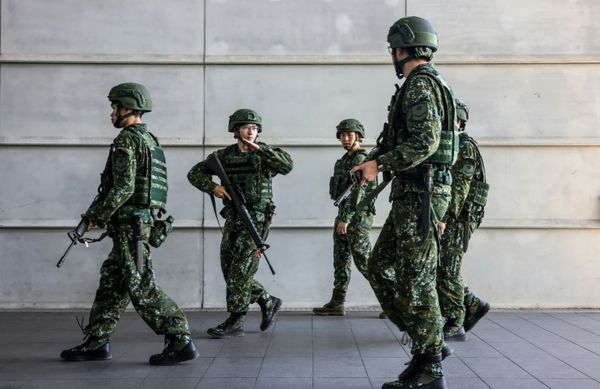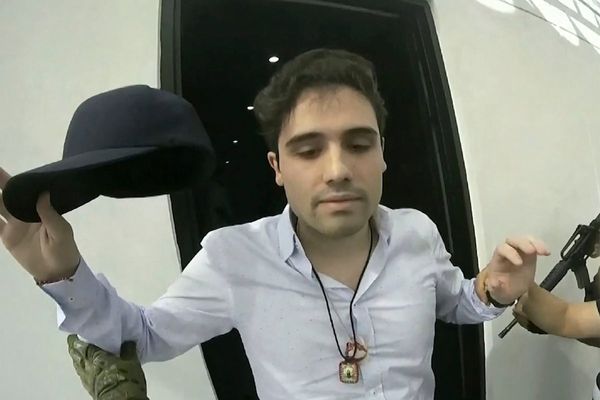Hotel Moskva, near the Red Square in the Russian capital, was one of the most powerful architectural symbols of the Stalinist era. Designed by the legendary Alexey Shchusev and opened in 1935, it had two different facades: one wing was straight-laced with small windows and simpler details, while the other was ornate and decorative with larger windows.
The story behind the twin design is that Shchusev had submitted two designs on the same sheet of paper. Stalin affixed his signature in between the two designs and sent it back. Afraid of checking with his boss about which one he had selected, Shchusev combined both designs into one structure, which stood tall in Moscow as a symbol of power and fear until 2004 when it was demolished. The Four Seasons Moscow stands in its place today.
This story is often told to show how Stalin was feared even by the most famous architect of Soviet Russia. Historically, the rulers of Russia followed the axiom that it is better to be feared than loved, and commanded absolute loyalty from both their subordinates and the public. Russian President Vladimir Putin’s reign has not been entirely different, even though Mr. Putin has always emphasised “the constitutional order” and legitimacy. He maintained a tight grip over the system he presided over. As American academic Walter Russell Mead wrote recently, the man in the Kremlin can afford to do anything except being seen as weak.
But this aura of power and invincibility was dented on June 24, 2023 when an armed column of Wagner mercenaries launched a march towards Moscow after seizing a critical regional military headquarters in southern Russia. In a country where public criticism of the war can land a citizen in jail, Yevgeny Prigozhin, the former Putin confidant and the chief of Wagner, did not just launch an open mutiny against the state but also walked free. Worse, this was a drama that unfolded at a time when Russia was engaged “in an existential battle” with the “collective West” in Ukraine.
A strategic mistake
Before the Ukraine war began on February 24, 2022, Mr. Putin had made a host of risky geopolitical moves that helped him shore up his support at home and expand Russia’s influence abroad. He neutralised Georgia through a short but powerful intervention in 2008. He took Crimea in 2014 without a fight and backed Russian-speaking Ukrainian rebels in the Donbas. In 2015, he sent troops to Syria, which hosts Russia’s only naval base outside the former Soviet territory, and turned around the civil war.
The Syrian intervention also helped Russia neutralise two of America’s allies — Israel and Turkey. At home, there was no challenge to Mr. Putin’s authority; Dmitry Medvedev, the former President, was discredited and Nikolai Patrushev, arguably the second most powerful man in Russia, remained a loyal ally. Mr. Putin got the Constitution rewritten so that he could, in theory, stay in power beyond 2024, when the next presidential elections are due. Then came the Ukraine war.
It is now clear that the Russians were not ready to fight a prolonged war in Ukraine. Like the Russian intervention in Georgia or the annexation of Crimea, Mr. Putin wanted and expected a quick victory in Ukraine. Before the war, he saw Russia emerging stronger and the West becoming weaker, especially after the defeat of the United States and its humiliating retreat from Afghanistan (Leonid Brezhnev made the same assessment in the mid-1970s after the U.S.’s defeat in Vietnam, and would eventually send troops to Afghanistan in 1979). Had Mr. Putin achieved a quick victory in Ukraine, it would have further strengthened Russia’s position as a great power in eastern Europe and Central Asia, besides a strong presence in West Asia, and bolstered his standing at home.
But when the Russians failed to take a quick victory, that opened a strategic opportunity for the Biden administration, just as the Soviet intervention opened an opportunity for Jimmy Carter and Ronald Reagan, in Afghanistan. The U.S., which shut its embassy and fled Kyiv in the run-up to the war, came back with a vengeance. Russia adapted itself to the new reality of a prolonged invasion. As the war dragged on, Mr. Putin’s plan was to outlast the West in a war of attrition. But Mr. Prigozhin’s rebellion suggests that the strains of the unlimited limited war have come home to haunt Mr. Putin himself.
Putin’s dilemma
Mr. Prigozhin’s mutiny is a microcosm of what went wrong for Mr. Putin after the war was launched. The mercenary chief has been attacking Russia’s wartime defence establishment and the way the war was being conducted for months. For any observer of Russian politics, it was evident that something was going wrong in Mr. Putin’s inner circle. But still, the Russian leader failed to control Mr. Prigozhin, a Frankenstein warlord of his own creation. And even after he launched the mutiny, Mr. Prigozhin was allowed to walk free. Why did Mr. Putin, who once famously said he would never forgive betrayal, cut a deal with the man who challenged his authority?
The answer lies in the complex power structures of the Russian polity. The war in Ukraine may not have proceeded as per the plan, but Defence Minister Sergei Shoigu had delivered in the past. It was Mr. Shoigu who delivered on Crimea. It was under Mr. Shoigu that Russia made its successful military intervention in Syria. Even in Ukraine, after the initial mistakes (which allowed the West to consolidate itself and line up behind Ukraine with money, weapons, training and other resources), Russian troops have built huge fortifications along the front line, fighting off the Ukrainian counteroffensive. Undermining the Ministry of Defence at this time could affect the war plans.
On the other side, Wagner has been an important geopolitical tool for the Kremlin. It has allowed Russia to expand its influence in Africa without actually committing regular Russian troops. Wagner has also been effective on the front line in Ukraine by capturing Soledar and Bakhmut in Donetsk this year, which made them popular at least among the nationalist sections. So cracking down on Wagner could not only cause Russian bloodshed but also result in public backlash and confusion and operational inertia on the front line. This has put Mr. Putin in a dilemma. He cannot abandon the generals; he cannot crush Wagner. So what he has chosen to do has been to make peace even at the cost of being seen weak.
The core challenge
Historically, bad wars have been bad for Russian leaders. But, Mr. Putin is neither Nicholas II or Mikhail Gorbachev. At least the past 23 years of his rule suggest that Mr. Putin is a survivor. It is to be noted that even at a moment of weakness for the regime, no one from the Russian elite came out in support of the mutiny. Most of Mr. Putin’s Security Council members as well as local leaders issued statements in support of the “motherland” and the President. And immediately after the mutiny was aborted, Mr. Putin moved in to take over Wagner’s global empire. The problem is that the mutiny might have been averted without bloodshed but the underlying reasons that triggered the mutiny — the war itself, feud between the commanders, and the Kremlin’s perceived weakness to control the elite — remain unaddressed.
Last year, when Russia faced military setbacks in Kharkiv, Mr. Putin absorbed the humiliation and ordered a partial mobilisation. But if Russia suffers more battlefield defeats, his hands would further be weakened, as he himself warned of the Russian retreat in the First World War and the subsequent “state collapse”. If anything, Mr. Prigozhin’s mutiny has tied Mr. Putin’s future deeply with the result of the Ukraine war. And he is aware of it.
stanly.johny@thehindu.co.in







